Artichokes come into season mid August (winter in Melbourne). This means eating seasonally – they are rich in Vitamin C to keep cold and flu at bay and full of fibre to keep you healthy. Here’s just a few other reasons why artichokes are so good for you:
- high in potassium
- good for blood pressure and cholesterol
- stabilise blood sugar levels
- top antioxidant
- aid digestion
Once they are cleaned they can be cooked and eaten:
- baked whole and stuffed recipe
- preserved in vinegar/oil for use in salad
- stir fried in orange/lemon
- cooked in a frittata
- frozen for use throughout the year eg in stuffed pasta shells!
ARTICHOKE CLASS
How to clean and prepare artichoke to eat fresh for breakfast, lunch and dinner!
A sharp knife, fresh lemons cut in half, ready to squeeze into a bowl. Add water to cover.
Start cutting the stalks off.
Keep them aside and clean the outer leaves off the artichoke.
Hold the artichoke firmly and cut around where the stem was and the outer leaves will come away.
When the tough leaves have been removed, cut across the top pointy part of the artichoke.
At this stage, cut into quarters if using to stir fry or pickling. Cut and put them into the lemon water.
If using to stuff with breadcrumbs, spread the leaves and it will help to open them later.
As soon as they are cut, place them in the bowl with the lemon water.
Proceed with the stalks. Peel the tough outer stringy part off and chop into bite size pieces.
Put them in the lemon water as well. The stalks have a strong flavour and make a delicious tomato sauce for pasta or risotto.
Cook or pickle and Enjoy!

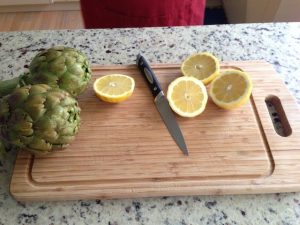

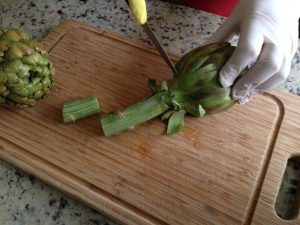
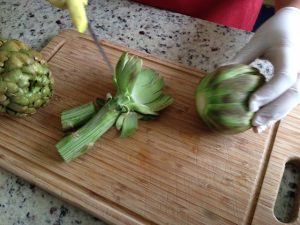
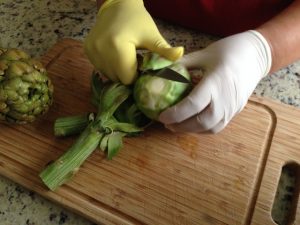
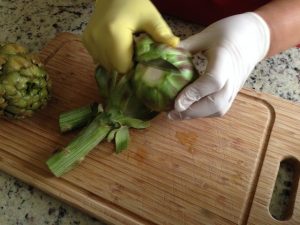
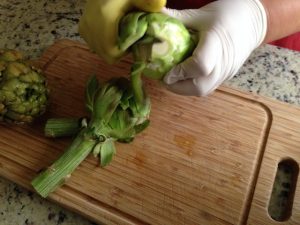
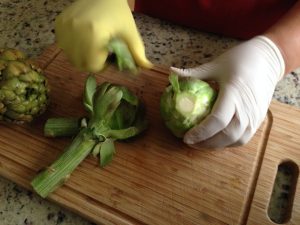
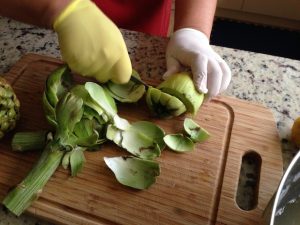
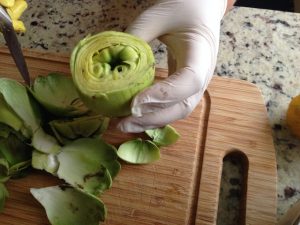
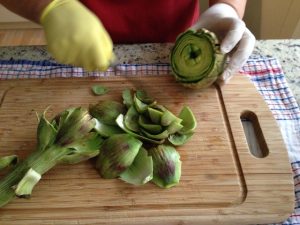

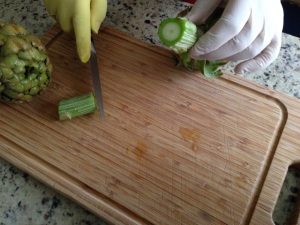
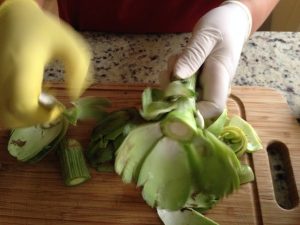
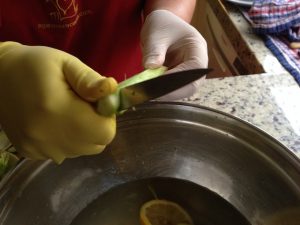


Recent Comments